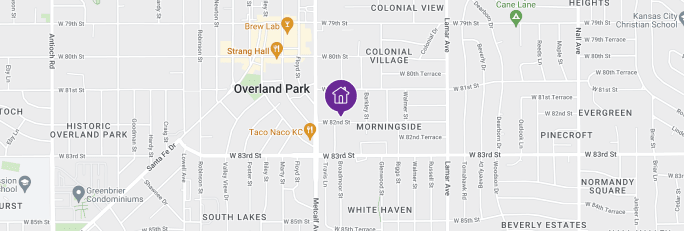Make the best senior care decision

Understanding Assisted Living Levels of Care

It’s a common question for seniors, families, and concerned caregivers: are there different levels of assisted living? Like most senior living options, levels of care in assisted living facilities are highly personalized and customizable. Assisted living levels of care vary depending on each community and how they define them. The level of care your family member receives helps shape their senior care plan and influences many aspects of the assisted living experience – from daily caregiver support to cost. To guide seniors and their families through the process of identifying levels of care for seniors, registered nurse and executive director at Heritage Hill Senior Community Lisa Perla shares her expertise.
Key Takeaways
- Assisted living levels of care vary depending on each community and how they define them. While some communities may have four levels of care, others could have five or six.
- The levels of care correspond with a needs assessment. The more assistance a resident needs, the higher level of care they are provided.
- It’s important to ask facilities about their pricing structure around levels of care. Higher levels of care sometimes mean higher cost, but it depends on the community.
- Find assisted living that fits. Narrow your search based on your loved one’s needs and price range.
In this Article
The needs assessment: determining levels of care in assisted living facilities
Before nurses and other assisted living staff members can develop a senior care plan, they’ll first need to assess your loved one’s mobility, fine motor skills, and medical conditions. Typically, this involves a nurse visit to the home to observe your parent in a natural, familiar environment.
In other scenarios, a nurse from an assisted living community might meet an older adult and their family at a hospital where the senior is receiving treatment or sit in on a physical therapy session. The nurse will often complete a questionnaire with the family, asking about chronic conditions such as diabetes, oxygen therapy, and other advanced needs, all of which lead to determining levels of care in assisted living communities.
It’s common for families to underestimate the level of care their senior loved one needs, says Perla. “Families are very used to covering up, and they don’t do it on purpose,” she says. This is especially true for parents who live with their children, as “the children become so used to doing things for the senior.”
Often, a community needs assessment for seniors will also incorporate physical tests. Perla typically relies on a “get up and go” test, which requires seniors to get up from their chair and take a few steps. This reveals their steadiness and agility, key indicators that can determine assisted living levels of care. If your parent uses a walker, the test indicates whether they use it correctly.
“You can get a good idea of how many people they’re going to need to assist them and what help they’re going to need when they get up in the morning,” Perla says. “It can be so simple, like dropping a pen. ‘Oh, can you help me get that pen?’ The best way of testing fine motor skills is asking someone to do something.”

Get a tailored list of senior living options.
Our free tool provides assisted living options based on your unique situation.
A look at what each assisted living level of care includes
Levels of care for seniors can look different depending on the specific assisted living community. While some communities may have four levels of care, others could have five or six — all with varying definitions or criteria. Nevertheless, an assisted living levels of care model will follow some general rules:
- A higher assessment score number represents more care needs or a more intensive senior care plan at a higher level. At many communities, levels of care for seniors depend on how many of their activities of daily living (ADLs) require staff assistance. This could involve scoring on a point system, in which points are assigned to common ADLs like tray delivery, toileting assistance, and blood sugar checks. A higher number of points translates to higher levels of care in assisted living facilities.
- Level 1 typically encompasses basic needs, like a wake-up visit in the morning and simple reminders throughout the day, says Perla. As residents need help with more ADLs, they move to a higher level of care. At Heritage Hill, for example, Level 2 accounts for hands-on help with one ADL, such as bathing, while residents at level 5, the highest level, receive assistance with four or more ADLs, such as dressing, grooming, or mobility.
When a care plan changes: reevaluating assisted living levels of care
Of course, seniors’ needs change as they age. With this in mind, assisted living staff and caregivers regularly reassess each senior care plan and corresponding level of care. Perla does this through monthly discussions at staff meetings. Other communities may conduct the same physical tests with residents at different intervals.
No matter the community, families are also welcome to share their concerns. Assisted living communities reexamine a resident’s level of care and care plan based on family observations, as well as those from community caregivers.

Assisted living facilities near you
There are facilities in your area
How the level of care affects assisted living costs
The cost of assisted living varies depending on the level of care, among other factors. Simply put, greater assistance comes at a greater cost. At Heritage Hill, seniors at level 1 pay no additional fees on top of rent, an application fee, and a security deposit upon move-in. At each level of care in assisted living facilities, fees rise by several hundreds of dollars per month. When determining your senior loved one’s level of care, make sure to ask thorough questions about needs assessments, pricing, and payment plans.
When the level of care required exceeds assisted living
While assisted living communities are home to residents with different care needs and at diverse stages in the aging journey, more complex health conditions may signal that skilled nursing or memory care could be a better fit. Examples of conditions requiring more intensive care include dementia, stage 3 and 4 wounds, and brittle diabetes. Additionally, many assisted living facilities do not staff nurses 24/7.
“Can we safely care for this person? That’s my rule of thumb across the board,” Perla says. “Safety is my number one priority. You have to look at each situation for each person.”
Find Assisted Living Near Me
Find an assisted living facility
There are <strong></strong> assisted living facilities near ,
View assisted living facilities
The information contained in this article is for informational purposes only and is not intended to constitute medical, legal or financial advice or create a professional relationship between A Place for Mom and the reader. Always seek the advice of your health care provider, attorney or financial advisor with respect to any particular matter and do not act or refrain from acting on the basis of anything you have read on this site. Links to third-party websites are only for the convenience of the reader; A Place for Mom does not recommend or endorse the contents of the third-party sites.